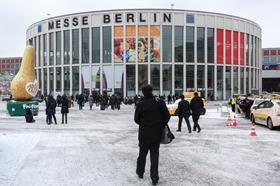
During Fruit Logistica in Berlin in February, one of the most popular attractions was the Port of Rotterdam’s virtual reality (VR) headset, which offered visitors a chance for a 360 degree tour of the Dutch facility and a ride on a container ship. At the same event, G’s gave visitors to its stand a tantalising VR tour of one of its Spanish farms. Ostensibly a gimmick, it nevertheless offered a fascinating glimpse into the future of marketing, and an area of technology the food industry is only just starting to get to grips with.
The launch of Oculus Rift and HTC Vive – headsets predicted to propel virtual reality into a new era in much the same way that James Cameron’s Avatar did for 3D – alongside inexpensive and mobile-friendly technology such as Google Cardboard, is making this the perfect time for fresh produce companies to find new ways to put themselves quite literally in the consumer’s eye.
It’s already taking hold in other areas of chilled food, with French cheese company Boursin winning praise for Sensorium, a 360 degree interactive trip around the inside of a fridge, while Nestlé gave customers a tour of its Brazilian coffee production using Google Cardboard.
According to research by food market analysts Mintel, some 50 per cent of UK consumers are already aware of VR technology and 31 per cent would be interested in using it, rising to 53 per cent of 16-24 year olds. “Beyond entertainment, VR presents businesses with an opportunity to provide in-store experiences and reassurance in areas which consumers continue to value,” Mintel said.
Augmented reality options such as Microsoft’s HoloLens, which creates interactive 3D models on everyday furniture in front of your eyes, will provide further options.
One fresh produce marketer who is already getting on board is Jonathan Corbett of the Little Big Voice. Corbett is working with VR to create virtual tours of stores and factories and as a tool to train staff about products on the shelf. It can also help show consumers where their food comes from. “We are also looking at Google Cardboard and Samsung Gear VR,” he explains. “It’s the way forward, a way of bringing farming to the masses and making it a bit more interactive. It’s as close as you can get to a touchy-feely experience without taking people to the farm.”
Technology doesn’t always work, of course, as evidenced by the mothballed Google Glass project, but virtual reality looks like more than a fad and those that can get on the bandwagon from the start will have a powerful new marketing tool at their disposal.






No comments yet